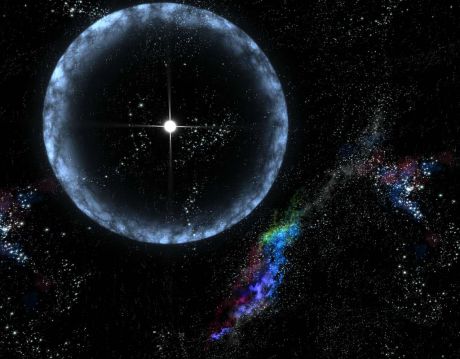Sneak peek inside neutron stars

stellar_quake_full
By NASA [Public domain], via Wikimedia Commons
EU-funded physicists have gained glimpses of the stuff inside neutron stars, combining observations with theoretical calculations to pin down the nature of matter in these ultra-dense stellar corpses.
Neutron stars are the remnants of supernovae explosions whose matter is
so condensed that protons and electrons within its atoms fuse into
neutrons. Their density is so high that a teaspoon of the ultra-dense
stuff would weigh about six billion tons on Earth.
Some neutron stars also possess strong magnetic fields that are a million billions times stronger than the magnetic field of the Earth. Not surprisingly, neutron stars offered a unique laboratory for EU-funded scientists to test matter in extreme conditions that cannot be reproduced in any Earth laboratory.
The ultimate aim of the NSLABDM (Neutron stars as a laboratory for dense matter) project was to constrain the properties of supranuclear matter in their interior with measurements of neutron star masses, radii and cooling rates. The results represent a significant advancement in our current understanding of strongly interacting matter.
Properties of the hot and dense environment in neutron stars' cores were studied within the framework of effective field theories. NSLABDM scientists were able to calculate the drag force and diffusion coefficients of strange mesons that are of relevance for heavy ion collision experiments.
NSLABDM used measurements from heavy ion collisions to define an equation of state of nuclear matter for densities up to three times the nuclear matter saturation threshold. From this relation between density, temperature and pressure, they could estimate a limit for the highest allowed neutron star mass.
At the extremely high pressures inside neutron stars, neutrons link up. The pairs produced relax into the lowest possible energy state quantum physics allows and convert to a superfluid. NSLABDM scientists analysed different dissipative processes to derive transport coefficients that are key to understand the microscopic physics of friction-free matter.
All the results obtained have been described in the numerous publications that stemmed out of the NSLABDM project. Research outcomes provided valuable insights into how fundamental particles interact and how much material can be compressed.
published: 2016-02-01